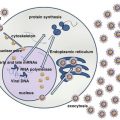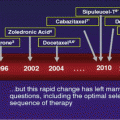© Springer International Publishing Switzerland 2015
Jean-Pierre Droz, Bernard Carme, Pierre Couppié, Mathieu Nacher and Catherine Thiéblemont (eds.)Tropical Hemato-Oncology10.1007/978-3-319-18257-5_7Pathology and Cancer Research
(1)
Pediatric Oncology Service, Research and Training Directorate, Uganda Cancer Institute, Kampala, Uganda
(2)
Department of Pathology, School of Biomedical Sciences, College of Health Sciences (At Mulago), Makerere University, Kampala, Uganda
(3)
Uganda Cancer Institute, Mulago Hospital and the Makerere University School of Medicine, Upper Mulago Hill Rd, 3935, Kampala, Uganda
In adequate pathology, data and infrastructure do not only negatively affect clinical case; they demotivate research. In the developing countries, there is inadequate attention put during training on the important role good pathology practices play in getting correct diagnosis. A case in point is improvement in sample acquisition process right from obtaining disease-representative samples to transmission to the lab. It is important to emphasize that sample acquisition cuts across disciplines although commonly tissues are obtained following surgical procedures such as excision biopsy. Fresh tissue should be obtained and examined by gross inspection, touch preparation, or frozen section examination especially when dealing with lymphoid malignancies. Ideally pathology service should perform frozen section diagnosis to guide surgical resections and track histopathologic and cytopathologic diagnoses. Examination of tissues by microscopy is a key step. First, the general algorithm starts with the low-power appearance of the tissue section. The cell size, the nuclear shape gross examination, tissue sampling, and histological slide preparation transportation, reporting, and archiving should be emphasized [1]. There is a need for diligence in obtaining representative tissue sample, a process informed by experience, training, and tutoring. Second is timeliness in moving samples from surgery to pathology departments for processing [1, 2]. Third is appropriate and timely processing and fixation of samples for routine and special procedures. Fourth, prompt reporting is important in raising interest in the services of pathologist to clinicians and patients. Fifth, at the end of the process, there must be a reliable system of archiving/storage of samples and results for continuing care and research. The archival system must ensure there is safety of materials, confidentiality, and at the same time ease of retrieval for review and reanalysis.
Stay updated, free articles. Join our Telegram channel

Full access? Get Clinical Tree





